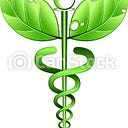PHYTOESTROGENS AND PHYTOSTEROLS
What differentiates between drugs and medicinal plants is that the latter contain phytoestrogens and phytosterol substances in addition to mineral salts.
1- Phytoestrogen Structure.
Phytoestrogens belong to a large group of substituted natural phenolics compounds: the coumestans, prenyl-flavanoids and Isoflavones. Lignans, stilbenes and terpenoids have also been identified as phytoestrogens but they are not flavonoids. Studies have proved that phytoestrogens play an important role in the regulation of cholesterol and the maintenance of proper bone density post-menopaus, prostate, breast, bowel and other cancers, cardiovascular disease, brain function disorders and osteoporosis.
2-Isoflavones And Lignans .
Phytoestrogens represent a heterogeneous group of herbal substances, the structure of which is similar to that of 17-β-estradiol. They are called estrogen-like molecules or non-steroidal estrogens. In spite of the structural similarity with estradiol, phytoestrogens are diphenolic yet non-steroidal compounds. Currently the group of phytoestrogens includes more than 100 molecules, divided according to their chemical structure into :
1) Isoflavones (genistein, daidzein, biochanin A, formonetin).
2) lignans (matairesinol, secoisolariciresinol-diglucoside).
3) coumestans (coumestrol, 4-methoxycoumestrol)
4) stilbens (resveratrol).
The main food sources rich in phytoestrogens are nuts and oilseeds, followed by soy products, cereals and breads, legumes, meat products and other processed foods that may contain soy, vegetables, fruits, alcoholic and nonalcoholic beverages. Flax seed and other oilseeds contained the highest total phytoestrogen content, followed by soybeans and tofu.
3- Phytosterols.
Briefly, phytosterols are defined as plant sterols and plant stanols.
3-1- Sterols In Organic Chemistry.
The sterol ring is common to all sterols; the differences are in the side chain. Plant sterols include a wide variety of molecules that are structurally similar to cholesterol; the principal examples are 4-desmethyl sterols. Plant sterols are C-28 or C-29 sterols, differing from cholesterol (C-27) by the presence of an extra methyl (campesterol) or ethyl (sitosterol) group; most phytosterol side chains contain 9–10 carbon atoms, instead of 8 as found in cholesterol.
3-2-Saturated Stanols And Unsaturated Sterols.
The terms plant sterol and phytosterol are sometimes used as generic terms to include both unsaturated sterols and saturated stanols. The term plant sterols refer to the unsaturated compounds. Whereas the saturated sterols refer to plant stanols missing double bound in the ring structure. The most abundant sterols in plants are 4-demethylsterols such as sitosterol, campesterol, stigmasterol, delta 5-avenasterol, and delta 7-avenasterol. Sitosterol is the predominant sterol (90%).
3-3-Physiological functions of phytosterols.
In the human diet, campesterol, β-sitosterol, and stigmasterol are the most abundant phytosterols and are generally consumed at approximately 50 to 200 mg per day. Phytosterols are distinguished from cholesterol by their function in the lipid bilayer and are not precursors of mammalian steroid hormones.
3-4-Lowering LDL Concentration.
Any subject with a blood level of LDL cholesterol or “bad” cholesterol greater than 1.6 g/liter, as well as any subject with at least one cardiovascular risk factor, must benefit from dietary support to change their lifestyle, and their diet. The normal level of LDL cholesterol varies by gender. In men, it must be between 1.10 and 1.60 g/l. In women, normal values are between 1.00 and 1.50 g/l. the normal cholesterol level is 2 g/l.
3-5- Increasing Plant Sterols Concentration.
To decrease the intake of animal sterols, for the benefit of plant sterols it must include three main stages :
- An increase in the consumption of omega polyunsaturated fatty acids omega-3 (Rapeseed, soybean, Linseed, walnut oil, etc).
- An increase in fiber and micronutrient consumption naturally present in fruits, vegetables, and cereal products,
-A limitation of dietary cholesterol and the use of foods enriched with plant sterols.
3-6- Plant Sterols And Intestinal Absorption.
Thanks to a biochemical structure very close to cholesterol, plant sterols play, in plants, a role similar to that of cholesterol in humans in maintaining the structural and functional integrity of cell membranes. In humans, intestinal absorption of plant sterols is low. Thanks to their structure similar to that of cholesterol, plant sterols attach to the micelles (fatty acids) which transport cholesterol in the intestine, thus reducing its absorption by competition effect. Unabsorbed cholesterol is then eliminated in the stools, leading to a reduction in LDL cholesterol (known as “bad” cholesterol) in the blood.
3–7- Sources.
-The Physiological Actions of Isoflavone Phytoestrogens. L. PILŠÁKOVÁ1, I. RIEČANSKÝ1,2, F. JAGLA1.
-Phytoestrogens as Pharma Foods Charu Gupta, PhD1*; Dhan Prakash, PhD1; Sneh Gupta, Msc2 aru Gupta, PhD.
-Phytoestrogens Richard Dixon University of North Texas
-Antioxidant activity of phytoestrogen type isoflavones in biomimetic environments. Mariana Voicescu,Petra Hellwig and Aurelia Meghea.
-Phytosterol — a Functional Ingredient for Indian Food Industry. Author Poshadri Achinna Professor Jayashankar Telangana State Agricultural University
-Exploring the biophysical properties of phytosterols in the plasma membrane for novel cancer prevention strategies. AUTHORS Omar Fakih, Didem Sanver, David Kaneband James L Thorne.
-Phytosterols as Functional Food Ingredients M. Taşan B. Bilgin Ü. Geçgel A.Ş. Demirci. Trakya University, Tekirdag Agricultural Faculty, Department of Food Engineering, Tekirdag, Turkey
